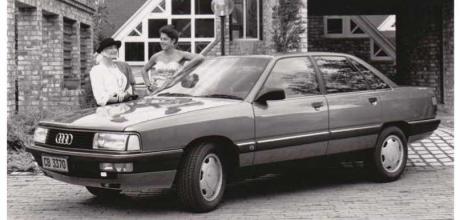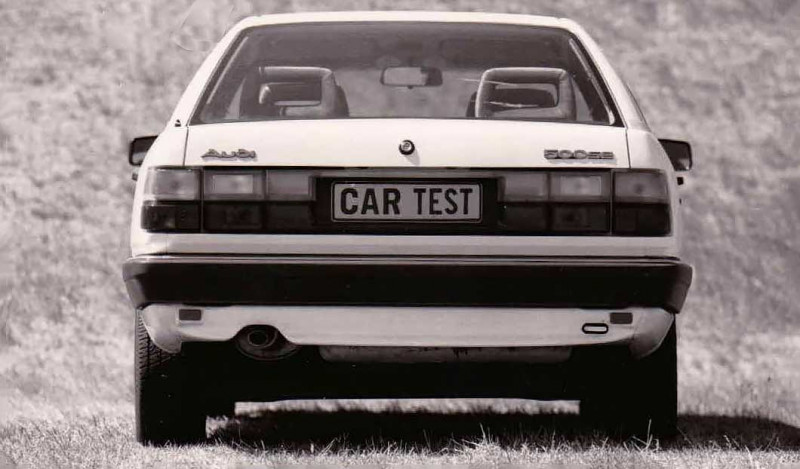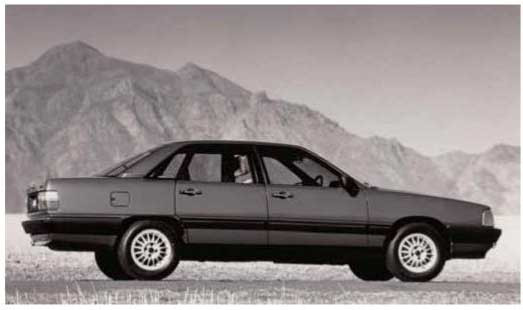Buy starter classic Audi 500 1983–1994

Building on the reputation of the Audi 100 in the 1970s and the 200 the decade thereafter, the brand’s 500-badged models were introduced into SA throughout the 1990s. This Ingolstadt-based brand stubbornly avoided the temptation to follow its compatriot brands, BMW and Mercedes-Benz down the route of six-cylinder engines powering the rear wheels.
PACKAGING
The silhouette of the 500 was a thorough modernisation of the 100 and 200 models and continued a characteristic of the brand in having a longitudinally mounted in-line engine driving the front wheels. This was an unusual design feature shared with the first generation of VW Passats.

It did result in an increase in frontal mass owing to the forward mounting position of the engine. On the other hand, this simplified engine maintenance through ease of access. Over the years, the lighting and grille designs were mildly tweaked to help ensure continued customer interest. The SE models added leather upholstery and air conditioning while climate control remained an option. The boot swallowed a large 400 litres of luggage and at 80 litres, the fuel tank was also considerable in size.

POWERTRAIN
The Volkswagen Group’s familiar five-cylinder in-line engines were called upon to power the 500. Many of us that have owned VW Kombis fitted with the 2,3-, 2,5- or later 2,6-litre units can testify that these are first-rate engines capable of high mileages. The 1983 models had a capacity of 2 144 cm3 that produced 100 kW. In 1985 the engine had grown to 2 226 cm3 but produced only 95 kW, though peak torque of 185 N.m was achieved at a driveability enhancing 3 000 r/min instead of the rather high 4 800 r/min at which it peaked previously.

The top model in 1989 was the 500 Turbo. This engine ran a conservative boost of 0,6 bar with a reduced compression ratio of 7,8:1. Power output was 125 kW, with 240 N.m. The SEL arrived as the range’s flagship in 1992. This was fitted with a 2,8- litre V6 providing a modest 128 kW and linked to a four-speed autobox. In 1994, a five-speed ZF-sourced ‘box took its place with a five-speed manual still available.
SUSPENSION AND STEERING
This was a standard set-up comprising MacPherson struts in the front and a torsion crank axle with a Panhard rod at the rear. Steering used a hydraulically powered rack-and-pinion system.
WHICH ONE TO GET
Although being more complex than the standard versions, the Turbo would be a good collector’s drive. The V6 might also be a bit expensive to maintain. Still, the Bosch Motronic fuel injection does a sterling job and maintenance is mainly concentrated on keeping the oil clean and the radiator and water pump (along with using only top-quality antifreeze) in good condition.
AVAILABILITY AND PRICES
Normally, with limited sales of large sedans, there would very few still on the roads in later decades. In the Audi 500’s case, it turns out there is a fair number of survivors. This is probably because these were initially very well cared for by owners and perhaps driven by executives, as with the Mercedes- Benz S-Class and BMW 7 Series. Prices are very reasonable and mechanical parts should be reasonably easy to obtain.
01 The classic three-box Audi sedan silhouette of the era. 02 Audi’s characterful five-cylinder in-line engine. 03 Plush leather seats. 04 A large sedan at 4 793mmlong. 05 Four rings on the four-spoke steering wheel.
INTERESTING FACTS
Curiously, it was only in South Africa that the 500 nameplate was adopted for this model. In the US, it was badged as 5000. This generation of Audis added a level of sporty prowess to cars otherwise known for their focus on luxury. In addition to the walnut-finished fascia, additional instrumentation, including a voltmeter and oil-temperature and pressure gauges were added. These were offset by an analogue clock. An LCD display took care of trip details and turbo-boost progress. In the 1980s, the famous Ur Quattro dominated the world rally scene, including in South Africa. In 1988, Sarel van der Merwe set a South African land speed record of 358,9 km/h in a modified Audi Turbo, its 478 kW motor’s boost set to a hefty 3,0 bar. The car’s 90-degree V6 motor incorporated crank pins offset by 30 degrees for improved refinement. Prices when new (using the 500 SE as an example) rose alarmingly from R33 000 in 1985, to R105 000 in 1992.
SPOTTED IN THE CLASSIFIEDS
Audi 500 SEL 1992, white, 162 000 km, R29 000
Audi 500 E manual 1991, blue, 280 000km, R34 900
Parts and info: audiownersclub.com | audiworld.com | audiforums.com
TECHNICAL DATA
- Model: Audi 500 SE AT
- Acceleration 0-62mph/0–100 km/h: 12,33 seconds
- Top speed: 189 km/h
- Fuel consumption index: 8,71 L/100 km (at 100 km/h)
- Price: R77 520
- CAR test: June 1990 and nine others from 1983 to 1994

